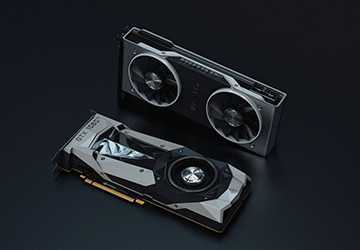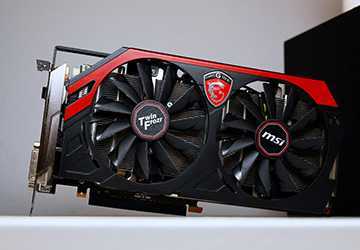Top 5 Graphics Cards for Video Editing in 2023
Hidden Power: Why graphics cards are non-negotiable in modern video editing
Many people often underestimate the role of a graphics card in video editing. A common misconception is that all you need is a powerful CPU. While the CPU is critical, it's only one piece of the puzzle. If you're serious about video editing, a powerful graphics card isn't an option; it's necessary. This is especially important regarding the best graphics cards for video editing in 2023, a year in which technological advancements have raised the bar for "professional-level editing." As high-resolution formats like 4K and 8K become more common, the graphics requirements for smooth editing have skyrocketed. Simply put, the video editing hardware landscape changed in 2023, with powerful graphics cards now at the forefront of any demanding editing setup.

CUDA cores and stream processors: more than just jargon
At first glance, terms like CUDA core and stream processor may sound like terms designed to confuse consumers, but understanding these terms is critical to unlocking the true potential of your video editing setup. CUDA cores (Nvidia era) and stream processors (AMD era) represent tiny computing units that take over the computing tasks of the graphics card. More cores usually mean better performance, but there's a catch: architecture. The latest graphics cards for creative professionals feature an advanced architecture that enables each core to perform tasks more efficiently, resulting in faster render times, faster previews, and an overall more responsive editing experience.
Video Random Access Memory (VRAM): The unsung workhorse of video editing
When people discuss specs, they often skip VRAM and focus on more general terms like RAM or storage. This is a mistake. In the world of video editing, VRAM is your hidden workhorse. This particular type of memory is responsible for storing video data during processing. Think of it as your editing desk. A larger table allows you to distribute materials more freely, providing a better working experience. The same applies to VRAM. Larger VRAM (such as 8GB or more) allows for more efficient editing of high-resolution video, which is especially important when working on multi-layer projects.
Compatibility cannot be ignored: your software and graphics card must speak the same language.
Even though a graphics card is powerful, there are better ones for you. Compatibility between your editing software and graphics card can significantly impact your editing experience. Before purchasing, check which graphics cards are recommended or required by the software of your choice. Some video editing programs like Adobe Premiere Pro and DaVinci Resolve are optimized for specific cards, and using an incompatible card may limit your access to certain features, making this a critical point in any CPU buying guide.
Why it's essential to be future-proof: Prepare for what's ahead in video editing
The world of video editing is dynamic, with new updates and features hitting the market regularly. This means that in a year or two, you may need more than just a graphics card for your current needs. With this in mind, investing in a card that meets your current needs and is prepared for future developments in video editing software and formats is a good idea.
The Warmth Factor: Cooling Systems for Maximum Performance
When working on complex video editing projects, your computer hardware generates heat. When choosing a graphics card, consider its cooling capabilities to maintain optimal performance. Overheating can cause crashes, slow render times, and an unpleasant editing experience. High-quality graphics cards used for video editing often come with advanced cooling systems that include features such as two or three fans, heat sinks, and sometimes even liquid cooling solutions. This may result in this aspect needing to be addressed.

Being budget-friendly doesn't mean you have to compromise.
While it's true that you get what you pay for, smart shopping can help you find a great graphics card for creatives without breaking your budget. Special offers, discounts, and refurbished models allow you to get the performance you need at a fraction of the original price. But be careful: sacrificing quality may cost you in the long run, with slower processing and possible compatibility issues.
Multi-SIM setup: a viable option?
When you're doing video editing, you may be wondering whether there are benefits to using multiple graphics cards. This setup, called SLI (for Nvidia cards) or CrossFire (for AMD cards), allows two or more cards to work together. While this sounds tempting, the reality is that not every video editing software can efficiently utilize multiple GPUs.
Connectivity: rich ports
In an age of ever-increasing peripheral demands, the variety of ports available on a graphics card can be an essential factor in your decision-making process. For example, you might need multiple HDMI ports to connect different monitors or a DisplayPort to connect to higher resolutions. In some cases, additional USB-C or Thunderbolt ports are beneficial for faster data transfers. Make sure the card you choose meets all your connectivity needs.
Intangibles: Customer Support and Warranty
Customer service and product warranty may not be the first things you consider when buying a graphics card, but they shouldn't be the last. Some companies offer excellent customer service and extended warranties, which can be lifesavers in the event of an unexpected breakdown. When making your final decision, consider the warranty and the quality of customer support.
Future-proofed: strategic investments in your processes
Many video editing professionals focus only on immediate needs and ignore the long-term capabilities of their hardware. However, when choosing video editing hardware for 2023, you should consider future-proofing it. Video editing software constantly evolves, and each update or version may require more.from your system.
Related Posts
- Top 10 Gadgets that Will Make Your Life Easier
- How to Conduct Ethical Hacking: Penetration Testing Essentials
- Top 10 Cloud Security Solutions for Data Protection
- What are the Benefits of a Dual Monitor Setup?
- Essential Software for New Computer Users
- 4 Most Important Gadgets for Remote Work to Boost Productivity in 2023